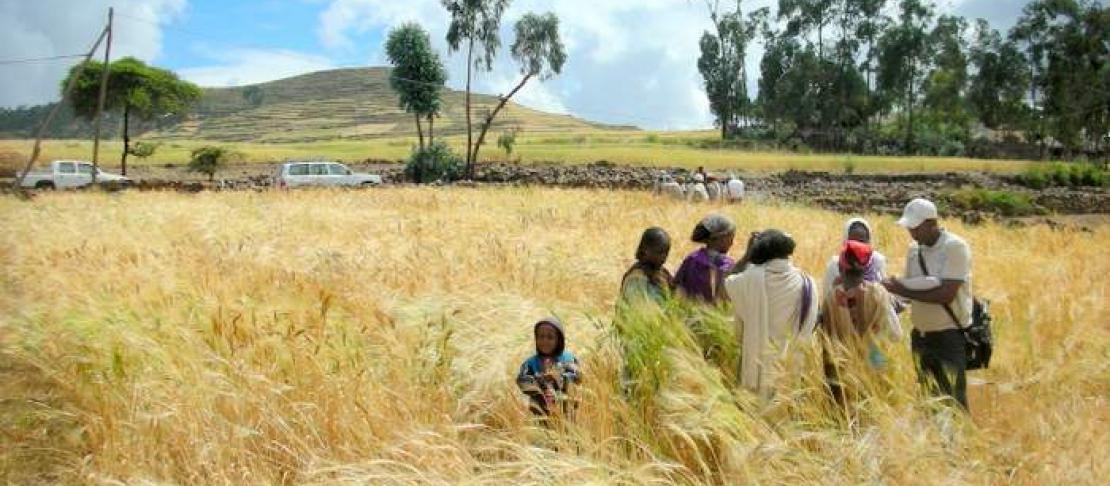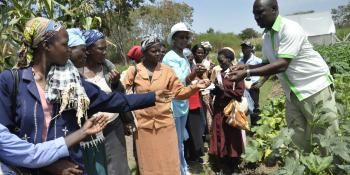How much local is local? Working with Ethiopian farmers to adapt to climate change

“All aspects of food security are potentially affected by climate change, including food access, utilization, and price stability.”
These words and other facts and figures from the Intergovernmental Panel on Climate Change help illustrate the perfect storm that we are now facing – climate change will affect us all, and on many fronts.
At the same time, the Sustainable Development Goals emphasize the need to place the world’s small food producers at the front and center of the global sustainable development agenda. Our role as scientists working in research-in-development, is to help put in place farmer-friendly research programs that “not only help lift the world’s poor out of hunger and malnutrition but create an enabling environment for existing and new entrants to food production so that they can flourish in terms of productivity, resilience and profitability”.
Bioversity International’s ‘Seeds for Needs’ initiative addresses both climate change and the challenges of small food producers by promoting locally-adapted varieties of major crops in Ethiopia and ten other countries around the world.
In Ethiopia, we tested durum wheat and barley improved and farmers’ varieties (landraces) in different environments. Out of over 12,000 accessions (plant samples) conserved in the national gene bank, 400 accessions (including 27 improved ones) were selected and planted under farmers’ conditions in two different locations, and evaluated by farmers. We also collected agronomic and morphological data and linked them with the farmers’ scores of the varieties, to see how ‘scientific’ traits might match farmers’ preferences. We wanted farmers to be part of the process to increasing resilience to climate change, food and nutritional security.
Astonishingly, we found a large number of landraces outperforming improved varieties: the yield difference between the most productive landrace and the most productive improved variety was 20%.
Based on criteria decided on by farmers and scientists, the best 35 varieties were then distributed to the farmers. To allow for the largest possible number of farmers to participate, we used a crowdsourcing approach to distribute the seeds: 200 farmers received 3 blind varieties and one control variety to test in their own fields. In this way, farmers became ‘citizen scientists’, giving us feedback about their preferences under their own conditions.
But we were also puzzled about another question: how ‘local’ is local in the Ethiopian highlands? Can farmers’ feedback vary greatly within a short distance due to differences in local climatic conditions? Our site with 12 villages at different altitudes, offered a great opportunity to explore the question. We monitored climatic conditions in each village using iButtons – small devices that record temperature and humidity 8 times/day: we learned that three villages exhibited temperatures of almost 3°C higher than the other nine villages, with a clear effect on farmers’ choices. With this information, we can now map temperature, farmers’ preferences and the performance of different varieties under these different climatic conditions, bringing together farmers’ knowledge and scientific knowledge to identify adaptation options at a very local level.
This is an excerpt from the Development Dialogues, Talking Science blog entry, How much local is local? Working with Ethiopian farmers to adapt to climate change. Click the link for the full article.
Blogpost and photos by Carlo Fadda, Senior Scientist Genetic Diversity, Bioversity International – c.fadda(at)cgiar.org



